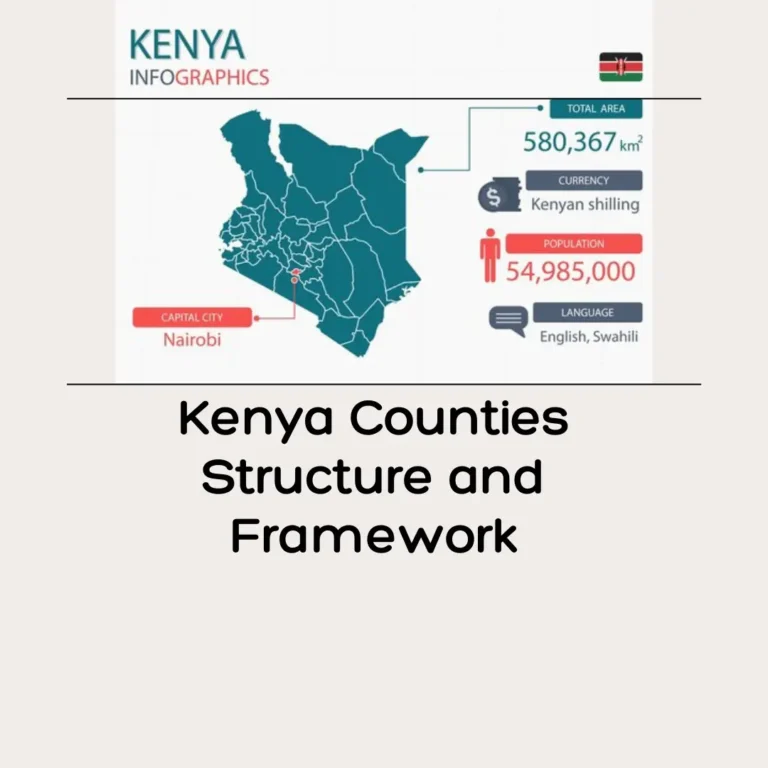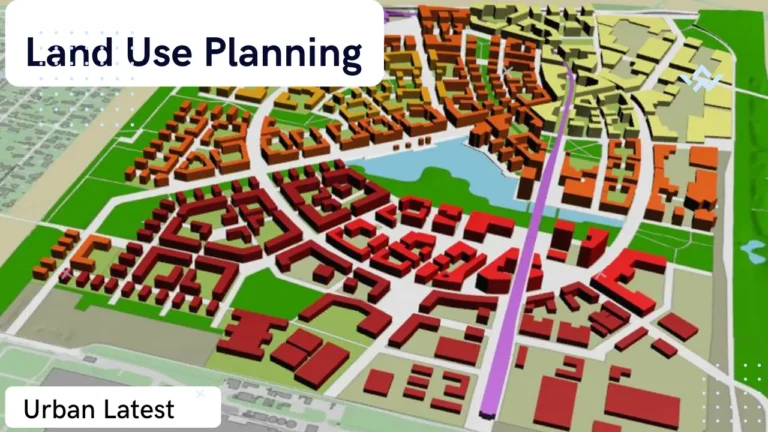Postwar Britain
Planning Machinery and Land Development Legislation, Postwar Britain” refers to the period of time following the end of World War II (1945) in the United Kingdom. It encompasses the years of recovery, rebuilding, and transformation that occurred in the aftermath of the war. During this period, Britain underwent significant social, economic, and political changes as it worked to rebuild its infrastructure, economy, and society after the devastation of the war. The term “postwar” signifies the time after the war’s conclusion.
Emergence of the ‘regional problem’
The problem here is that there are two different meanings for “regional planning.”
One meaning is about planning for cities and areas, and the other is about planning to help regions with economic problems.
The second meaning became important during the 1930s because of a big economic crisis that affected many countries. It’s about making plans to improve regions that are struggling economically, like when there’s a lot of unemployment or low incomes compared to the rest of the country.
These two types of planning are quite different. The first type focuses on how cities and areas are organized, like where things are located. The second type is about helping regions with economic issues, and it usually involves larger areas with multiple cities or towns.
In the past, certain regions in Britain had industries like coal mining and shipbuilding, but these industries declined, leading to high unemployment and low incomes. Other industries like electrical engineering and motor vehicles were growing, but they were mainly located in different areas, causing an economic imbalance between different parts of the country. Unemployment was very high in some areas, especially in the north, while it was lower in places like London.
This economic imbalance created a need for two types of planning: one to help struggling regions and another to organize cities and areas. These two types of planning should have different names to avoid confusion. The planning to help struggling regions can be called “national/regional planning,” as it focuses on how regions are connected to the whole country’s economy. The planning for cities and areas can be called “regional/local planning,” as it focuses on how different parts of a city or region are organized.
The need for these two types of planning became clear after the economic crisis of the 1930s and led to the development of Britain’s planning system after World War II.
The Barlow Commission and its report, 1937–40
In 1934, the government took action to address economic issues by creating ‘special areas’ where the economy was struggling. Commissioners were appointed for England, Scotland, and Wales with the power to spend public money to boost the economy.
They established ‘trading estates’ similar to successful private examples. Later, in 1937, the government formed the Barlow Commission led by Sir Anderson Montague-Barlow to investigate and offer solutions. This Commission played a crucial role in shaping postwar planning.
It linked the concentration of industry and population to the growth of large cities and identified the disadvantages of this concentration. The Commission found that prosperous areas grew due to their strong industries while struggling areas faced decline. It also analyzed problems in big cities like health, housing, and traffic congestion, with potential strategic dangers.
The Commission’s analysis suggested that government intervention was needed due to the imbalanced growth. The Commission’s work influenced policies and actions, and it proposed controls on new industry locations. However, opinions differed within the Commission regarding the extent of control. Ultimately, the government adopted a modified version of the more radical proposal.
The Commission also examined issues like controlling city growth and preserving agricultural land but couldn’t provide definitive recommendations due to the complexity. They also discussed building garden cities and new towns, emphasizing the need for further investigation.
The aftermath of Barlow
The Barlow Report was given to the government when World War II started and was published in 1940. During the war, the government was confident about the future and started more studies as suggested by the Barlow Report. From 1941 to 1947, several committees and planning teams created official reports that focused on different planning aspects. These reports, named after their leaders like Scott, Uthwatt, Abercrombie, Reith, Dower, and Hobhouse, laid the groundwork for postwar urban and regional planning in Britain. From 1945 to 1952, there was a lot of legislative activity, and the government acted on these recommendations by creating laws. Acts like the Distribution of Industry Act 1945, the New Towns Act 1946, the Town and Country Planning Act 1945, the National Parks and Access to the Countryside Act 1949, and the Town Development Act 1952 formed the postwar planning system. This system has been adjusted over time, but its main structure remains. This chapter discusses the important reports and laws that shaped the system, and it also looks at the system’s strengths and limitations.
The foundation reports
Scott and Uthwatt
The Barlow Report suggested important changes during World War II. The first study in 1942 was about rural land use. They said good farmland was priceless and should be protected. They proposed a planning system that preserved agricultural land and put the burden on developers to prove the public benefit of their plans. Another study looked at compensating landowners fairly when the government needed their land for public projects. They proposed nationalizing undeveloped rural land and having the government control its use. This idea faced controversy and opposition, as some felt it meant land nationalization. The government didn’t immediately act on it, but they made a quicker process for buying land in bombed cities for rebuilding.
Abercrombie and Reith
In 1944, the government got a big report by Patrick Abercrombie called the Greater London Plan. He assumed that the population in London and its surroundings wouldn’t grow much and that the Barlow recommendations for controlling industry locations would be followed.
He wanted to move lots of people from the crowded inner part of London to the outer areas. Abercrombie suggested creating a green belt around London, about 5 miles wide, to stop the city from spreading out.
This green belt would also be a space for recreation. He thought this would help with the overspill problem. He planned for new towns around 20 to 35 miles from London and expanding smaller towns farther away. Similar plans were made for other cities, like Glasgow. But building these new towns quickly was a challenge.
The government asked Lord Reith to lead a committee to figure out how to build new towns. They said special organizations should build the towns with funding from the government. This way, the towns could be built faster, even if it meant less local control.
Dower and Hobhouse
After a series of detailed committee reports from 1937 to 1947, a phase of official thinking on urban and regional planning ended. Only two more reports were left: the Dower Report in 1945 and the Hobhouse Committee Report in 1947, both about National Parks.
These reports recommended creating national parks for scenic and recreational purposes, managed by a National Parks Commission. This period of report-making was focused between 1937 and 1947, with the most activity during the war years of 1940-1945.
After World War II, a strong reforming spirit in the country, exemplified by the Labor Party’s victory in the 1945 election, led to the transformation of these recommendations into laws. The period of report writing was followed by a burst of legislative activity from 1945 to 1952. This period is the focus now, organized logically to understand how different pieces of legislation relate to each other. This might mean discussing the acts out of their chronological order.
The legislation
The 1945 Distribution of Industry Act
During the jounery of “Planning Machinery and Land Development Legislation” Industrial facilities or expansions over a certain size get permission from the government (called an industrial development certificate or IDC). This was meant to guide industries away from London and the Midlands and towards designated development areas. These areas received benefits like specially built factories, low-rent spaces, grants, and loans to attract new businesses.
However, the Act had limitations. It only applied to manufacturing industries, not offices or other service industries. Also, the incentives mostly focused on capital equipment, which led to automation and didn’t always reduce unemployment. There were also ways for companies to bypass the rules, such as slowly expanding existing plants or moving non-industrial activities to avoid needing a certificate. Despite these efforts, the impact on job distribution wasn’t as dramatic as expected, and the Act didn’t effectively control job growth in the southeast or Midlands.
The 1946 New Towns Act and the 1952 Town Development Act
The New Towns Act of 1946 was quickly passed after the Reith Committee’s final report. It allowed the government to create new communities, with the first town, Stevenage, designated in November 1946. The Act allowed the Minister of Planning to establish development corporations to build and manage these towns, with the expectation that they would eventually be managed by local authorities. However, in 1958, a new authority, the Commission for the New Towns, was formed to oversee the towns’ development due to the value they added to the community. Over time, more new towns were designated, and by 1980, these towns housed over 1 million people with 700,000 houses built.
Additionally, the Town Development Act of 1952 aimed to help existing rural towns expand and accommodate overspills from larger cities. However, progress was initially slow due to insufficient financial incentives and difficulties in reaching agreements between local authorities. But by 1977, around 89,000 houses were built under this Act, especially in places like Basingstoke, Andover, and Swindon. The program eventually concluded, with Greater London disengaging from the process
The 1947 Town and Country Planning Act
Between 1946 and 1952, two acts were passed in the UK to manage the planned expansion of cities and create new communities. These acts aimed to accommodate a large number of people moving out of crowded urban areas. The planned developments were expected to be a major part of the country’s postwar housing program. During this period, most new homes were built by the public sector, including local authorities and new town development corporations. The 1947 Town and Country Planning Act was crucial in establishing the planning system after World War II. It allowed for effective control of land use and development.
The key aspects of the 1947 Act were as follows:
- Nationalization of Development Rights:
The Act nationalized the right to develop land. This meant that the government had control over when and how land could be developed. Private landowners needed to get permission from local authorities to build on their land.
- Linking Plan-making and Development Control:
New local planning authorities were created, responsible for creating development plans for their areas. These plans outlined how land could be used over the next twenty years. Development had to adhere to these plans, and landowners needed planning permission from the local authority to develop their land.
- Compensation:
Landowners were compensated for losing the right to develop their land. This was important to ensure fairness since many had bought land with the intention of developing it. A formula was used to calculate compensation based on the value of development rights.
- Development Charge:
Initially, a 100% development charge was introduced, where landowners had to pay the government a fee equivalent to the increase in land value resulting from development. However, this created problems and was later modified.
- Market Value for Compulsory Purchase:
Changes were made over time, and in 1959, full market value was used as the basis for compensating landowners when their land was compulsorily purchased by public authorities. An exception was made for instances where public authorities themselves contributed to raising the land’s value.
- Attempts at Compensation and Betterment:
Subsequent acts in 1967 and 1975 attempted to address issues of compensation and capturing gains from land development. These acts introduced concepts like betterment levy and sharing of profits with local authorities.
- Planning Obligations:
In 1991, the Planning and Compensation Act introduced planning obligations or agreements, where developers had to contribute to the local community in return for planning permission.
These acts aimed to manage urban expansion, ensure fair compensation, and control development while considering public interests. Over time, adjustments were made to address challenges and improve the functioning of the planning system.
The 1949 National Parks and Access to the Countryside Act
Journey of “Planning Machinery and Land Development Legislation” still monetering and upadted and after the 1947 Act, there was another important law needed to complete the system. This new law aimed to take positive steps for protecting beautiful landscapes and allowing public access to the countryside. Two reports, the Dower and Hobhouse Reports, suggested creating national parks like those in the United States. However, when the National Parks and Access to the Countryside Act was passed in 1949, it didn’t fully adopt these suggestions.
The Act established local planning authorities based on counties and county boroughs, giving them the responsibility to plan the parks. A National Parks Commission was created to help with planning and provide some funds, but it only offered advice to the local authorities. The Act also allowed for outsiders like recreationists and conservationists to be part of local planning committees, but their influence was limited.
Critics argued that this approach was weak and wouldn’t effectively develop the parks for national benefit. This turned out to be true, as little progress was made in the decades following the Act’s passage. Only the Peak District and Lake District parks, managed by joint boards, saw some development. The Act also empowered planning authorities to create long-distance footpaths across scenic areas and designate areas of outstanding natural beauty for strict planning control, both of which had varying degrees of success. Additionally, in 1948, the government established the Nature Conservancy to protect natural habitats and wildlife. It could establish nature reserves and conduct research. The Conservancy’s success highlighted the importance of a strong agency with proper funding and authority, compared to the weaker National Parks Commission
What was the ‘regional problem’ in postwar Britain?
The ‘regional problem’ referred to uneven development and economic disparities between different regions of Britain.
What was the significance of the Barlow Commission’s report?
The Barlow Commission’s report (1937-40) highlighted housing and planning issues, influencing future policies.
Who were Abercrombie and Reith in this context?
Abercrombie and Reith were key figures who contributed to foundational planning reports.
What were the key acts related to town development in this period?
The 1946 New Towns Act and the 1952 Town Development Act aimed to promote planned urban growth.
How did the 1945 Distribution of Industry Act impact Britain?
This act aimed to disperse industries across regions, reducing urban congestion and boosting local economies.
What was the purpose of the 1947 Town and Country Planning Act?
This act aimed to control land use, development, and protect the countryside from haphazard urbanization.
What did the 1949 National Parks and Access to the Countryside Act entail?
This act aimed to conserve natural landscapes and provide public access to national parks.
How did the postwar planning machine contribute to Britain’s recovery?
It facilitated organized urban development, housing solutions, and economic growth.
What was the role of the 1946 New Towns Act?
The act empowered the creation of new towns to accommodate population growth and economic expansion.
How did the 1952 Town Development Act impact urban areas?
It supported comprehensive planning and redevelopment in existing towns to enhance living conditions






